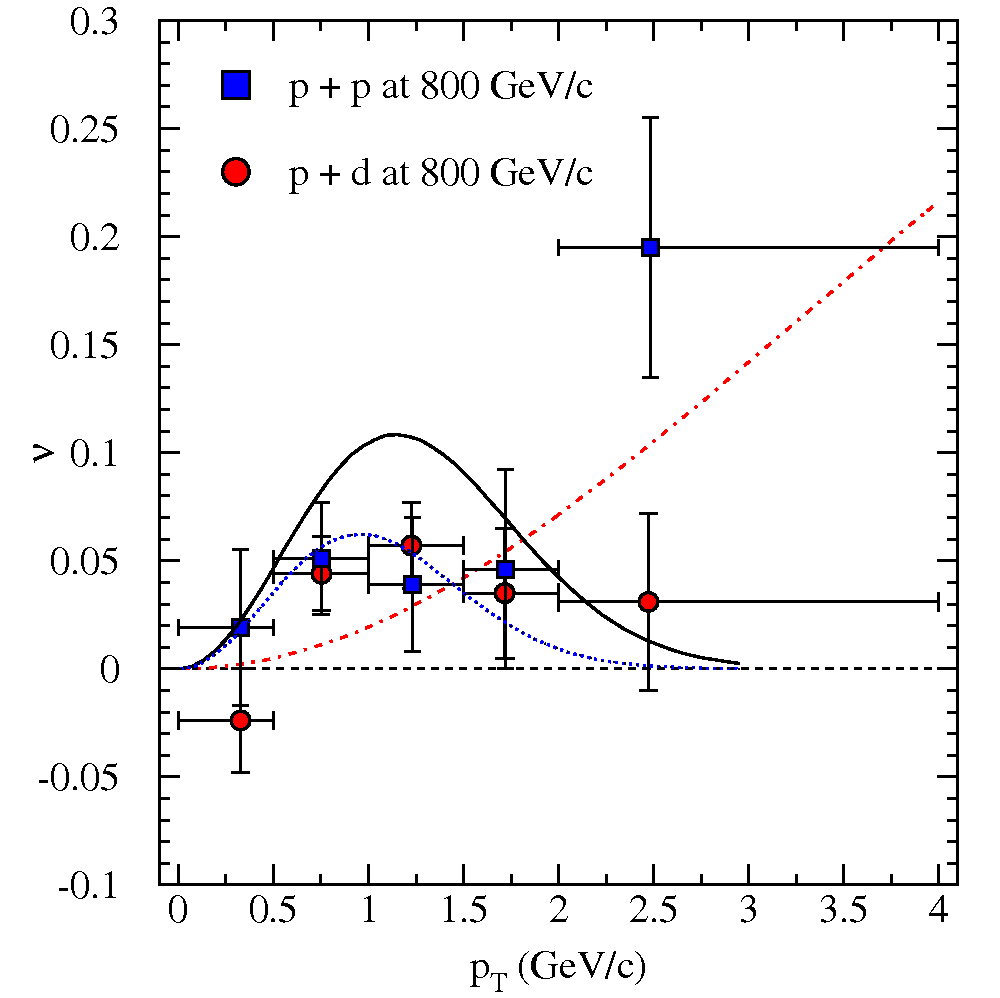Angular distributions as a window to QCD and the Boer-Mulders effect
The matter around us is composed of atoms with protons and neutrons at their core. Upon closer inspection, a proton (or neutron) is not a fundamental particle, but is made of constituents, known as quarks and antiquarks that are held together by gluons. The interaction of these particles is described by Quantum Chromodynamics or QCD. Since the (anti)quarks may move inside the proton, one may ask whether the (anti)quarks have any orbital momentum.
The orbital motion of the quarks may give rise to a Boer-Mulders distribution, which can be seen in the angular dependence of Drell-Yan scattering, where the transverse motion of the quarks (produced by their orbital paths) will create an angular distribution proportional to cos2φ. We have examined angular distributions from proton-proton and proton-deuterium1 collisions and found that the cos2φ dependence is very small. An analysis2 of our deuterium data produced a prediction of the Boer-Mulders effect on the proton data. Disappointingly, this prediction fails to describe fully the data. What is still missing? Additional QCD interactions can give rise to a cos2φ distribution. These effects appear to also be present, as shown by the red dot-dashed curve in the figure. These results were published in 2009 by Physical Review Letter.3

The cos2φ component (υ) of the Drell-Yan angular distribution plotted versus transverse momentum (pT). The dotted blue curve shows the fit to the deuterium. Based on that fit, the solid back line shows a prediction for the proton (red) data. This prediction does not fully describe the data; possibly because of the presence of other QCD effects described the red dot-dashed curve.
1L.Y. Zhu et al. (FNAL E-866/NuSea) Phys. Rev. Lett. 99, 082301 (2007).
Paul E. Reimer [email protected] 15 January 2010
![[Argonne Logo]](/images/argonne_header_logo.jpg)
![[DOE Logo]](/images/header_doe.gif)